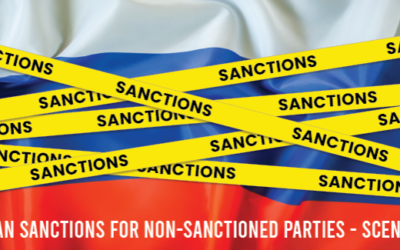On June 29, 2019 the trade union of Argentina, Brazil, Uruguay and Paraguay (“Mercosur”) closed a free trade agreement (“FTA”) with the European Union (“EU”). This “historic” agreement culminates a 20-year negotiation process and gained momentum with the election of Mauricio Macri in Argentina and Jair Bolsonaro in Brazil.
The agreement will mark the beginning of a new chapter in the history of international trade for the Mercosur countries and is a turning point for fostering political and economic relations of both trade blocks. Now there is a long and winding ratification process.
This FTA creates a market of goods and services of 800 million consumers and almost a quarter of the world GDP. It guarantees market access to a strategic market (the EU), with a GDP per capita of USD 34,000.
For the Mercosur, the FTA will boost GDP through the transformation of the productive matrix, the integration of value chains, job creation and the development of regional economies, the FTA promotes trade by eliminating tariffs for 93% of Mercosur exports and grants preferential treatment for almost all of the remaining 7%.
General Benefits
The general benefits of the FTA are threefold:
Greater institutional development
- Provides for a political, cultural and economic strategic and permanent bond between the EU and Mercosur.
- Provides for clear and transparent rules limiting thus political discretion in the adoption of economic policies.
Economic Development
- Providing better market access conditions to goods, services and investments, reducing or eliminating restrictions and simplifying procedures of the commercial operations.
- Increasing competitiveness facilitating access to technology and goods necessary to produce goods with higher value added.
Regional Integration
- The FTA consolidates Mercosur by reinstating the integration process, harmonizing its rules and simplifying the internal procedures.
ACCESS TO MARKETS
Industrial Goods
- The EU liberalizes almost 100% of its trade with Mercosur and Mercosur liberalizes almost 90% of its trade with the EU.
- The EU offers full and immediate liberalization of tariffs for 80% of the Mercosur’s exports to the EU.
- Mercosur obtains up to 15 years to liberalize sensitive sectors gradually.
- The agreement favors intra-industrial trade by reducing tariffs for inputs and goods of capital.
Agro-industrial Goods
- 63% of Argentine exports to the EU are agricultural goods.
- The EU liberalizes 99% of Mercosur’s agricultural imports: for 81.7% it will eliminate import duties, for the remaining 17.7% it will offer fixed quotas or preferences.
Elimination of non tariff barriers and facilitation of exports.
- Sanitary, phytosanitary protocols and technical standards: the agreement improves market access through the establishment of deadlines and procedures, avoiding unjustified and arbitrary measures. This provides greater certainty to exporters by basing the regulations on international regulations.
- Procedure for Certificates of Origin: exporters may reduce operational costs through the adoption of the self-certification process. The agreement provides a five-year transition period so that companies can adapt to this system and contains the necessary mechanisms to ensure that exclusively goods originating in Mercosur or EU can enjoy the the benefits contemplated in the agreement.
- Predictability and regulatory transparency: the agreement establishes provisions on liberalization of customs and clearance, reduction of physical inspections, simplification and harmonization of procedures.
EU and Mercosur service providers will be able to access the market of the counterpart under the same conditions as nationals. The agreement should stimulate the establishment of investments in the productive sector and in the services sector.
The European Union is the world’s leading importer of services for values that exceed 700 billion euros per year, while Argentina is a competitive exporter of services.
The agreement facilitates the increase of foreign investment by granting certainty and stability to investors.
Gradual application.
This FTA does not imply an immediate opening of the markets. The agreement achieved long deadlines for the entry into force of the tariff improvements, which allows continuing the program of productive transformation and improvement of the Mercosur competitiveness. In return, the EU tariff reduction will take place in a substantial faster period. More than 85% of EU imports from Mercosur will have this preferential treatment immediately.
Preliminary conclusions.
The trade agreement between Mercosur and the European Union represented a change in the integration of Mercosur, with the potential to significantly change the landscape of the economies in the coming years.
After years of paralysis in the commercial integration process, Mercosur has taken an important step towards the modernization of its economies. The trade agreement will not only bring more exchange of goods and services between different countries, but should also reinforce the competitiveness of economies by promoting a more efficient allocation of the factors of production.
The paralysis in the international insertion of Mercosur responded to two different political visions among its member countries: some sought trade integration with the international community and others designed their foreign policy subordinated to national interests.
The crux of the matter was to break the paradigm that had stopped Mercosur in its relations with the world: open or closed. The elections of Macri and Bolsonaro have helped move forward and reach an agreement.
There is a long transition period ahead of us –up to 15 years for industrial goods. Mercosur must eliminate 91% of import tariffs from the EU, which in turn should open 95% of its markets. It is worth noting that the weighted average of tariffs of the Mercosur (14.8%) is significantly larger than the EU (3.0%). Consequently, the prices of
European products would be cheaper than South Americans.
From a consumer perspective, the citizens of Mercosur would be the main beneficiaries.
The result of the Mercosur-EU negotiations regarding industrial trade was satisfactory for both sides The EU achieved its main purpose: liberalize trade in order to shore up its
industrial exports, while Mercosur achieved very long terms in those sensitive goods produced locally.
Finally, the agreement also addresses different commercial issues, such as: rules of origin,
trade facilitation, phytosanitary barriers, subsidies, among others. It is expected that on top of strengthening current trade between the two blocks, the FTA would facilitate the foreign investment from the EU to Mercosur countries.
FOLLOW US ON LINKEDIN
SEE MORE ALIANT INSIGHTS





